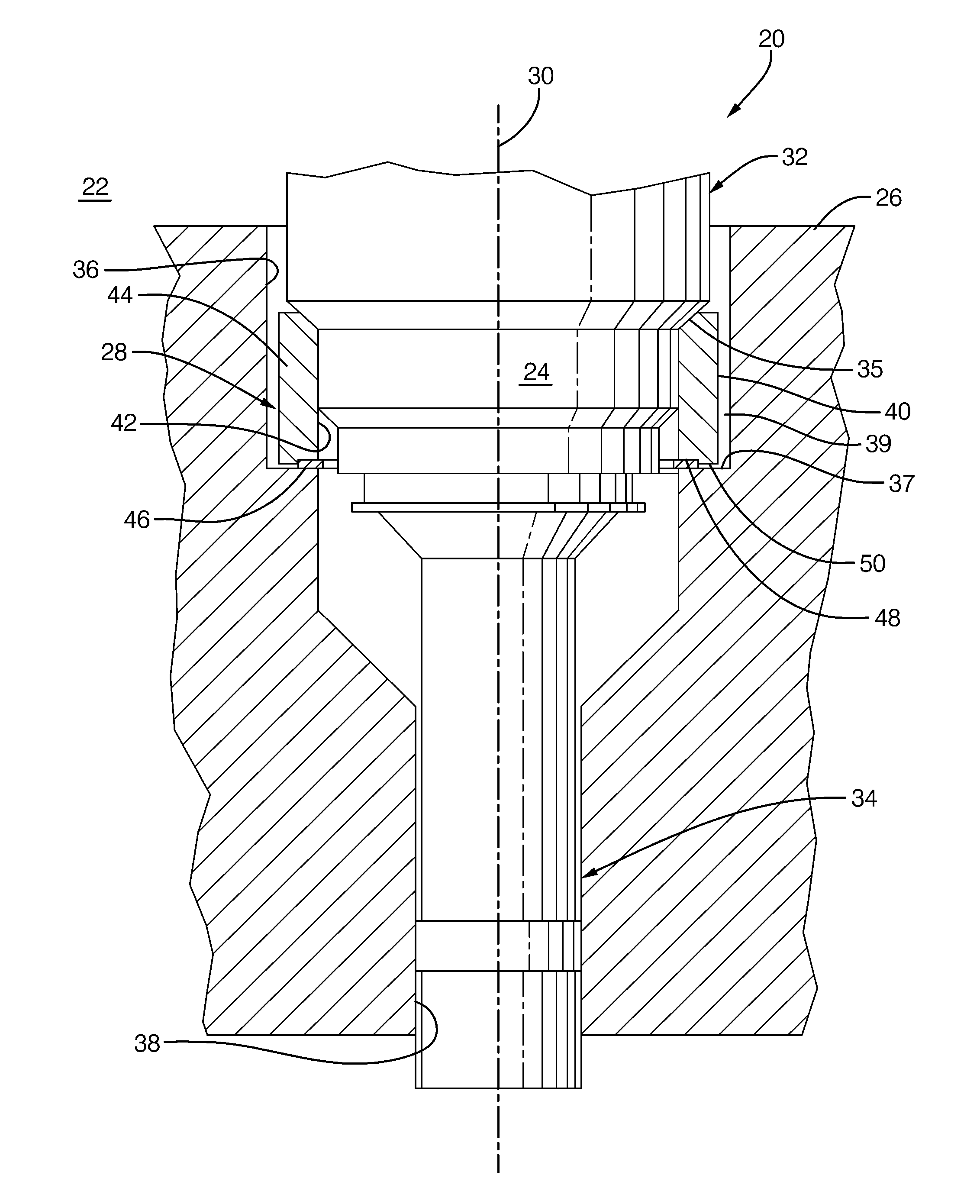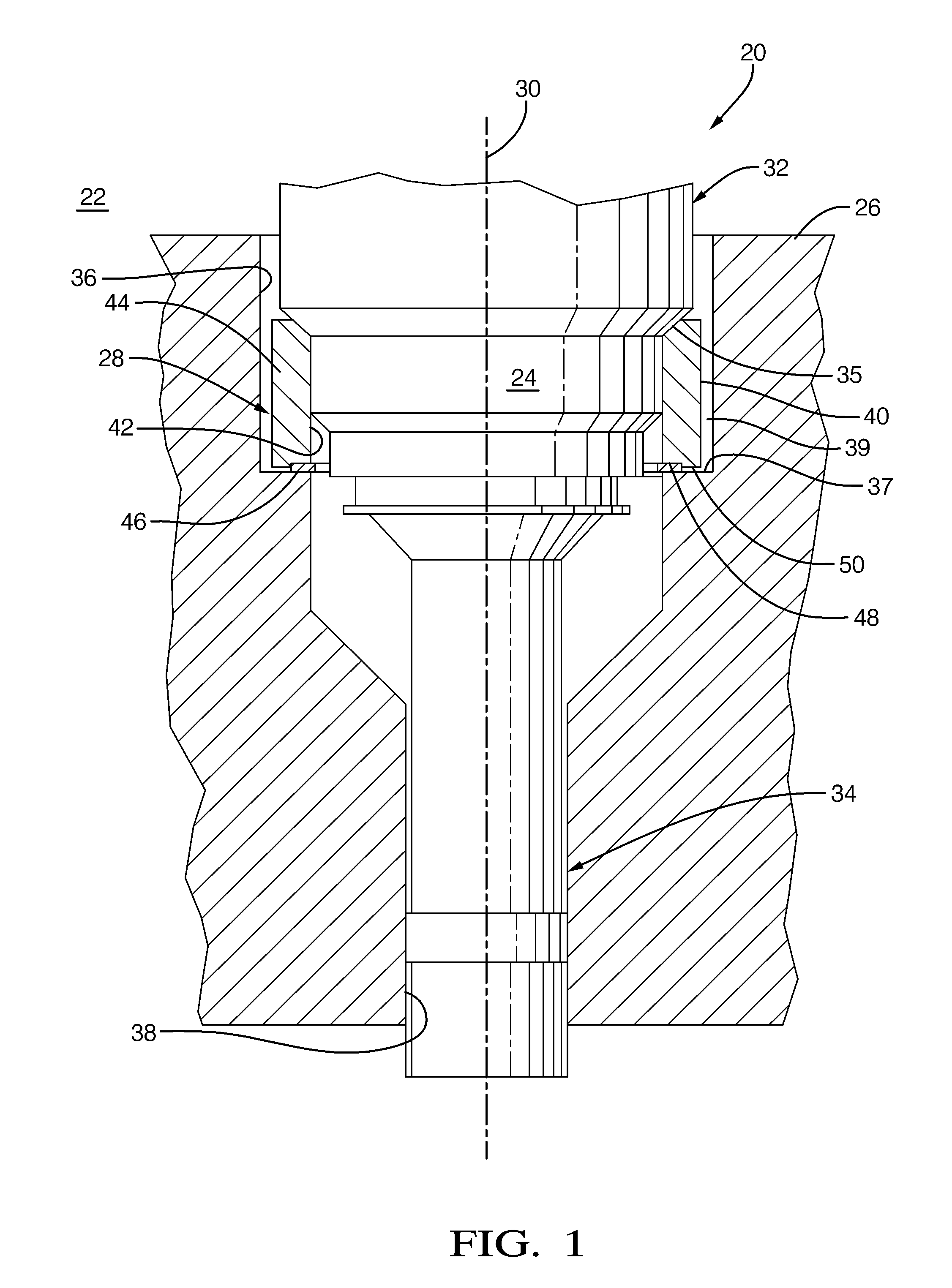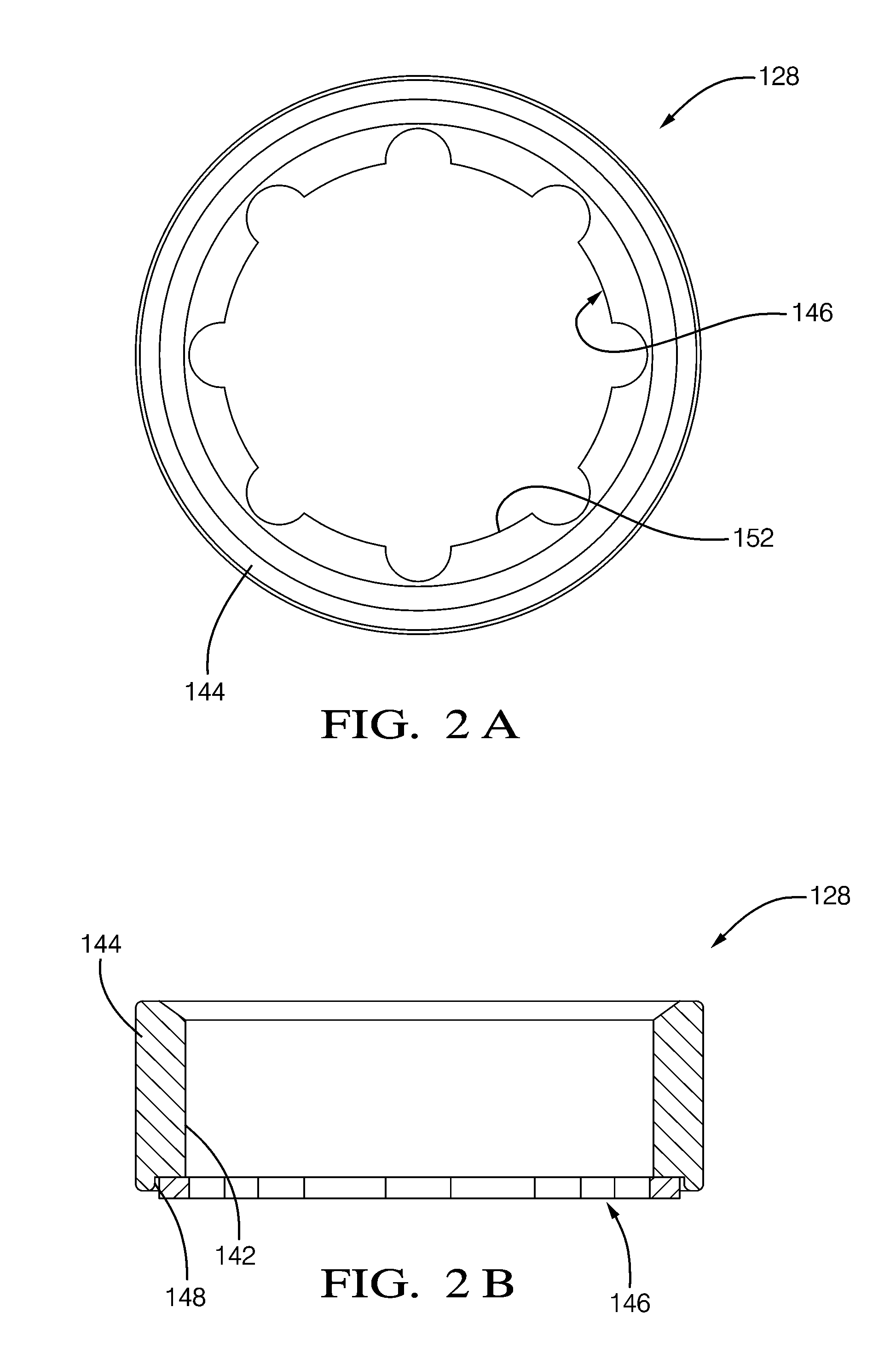Isolater for fuel injector
a fuel injector and isolation device technology, applied in the direction of noise reduction fuel injection, fuel injection apparatus, charge feed system, etc., can solve the problems of affecting the placement of highly precise fuel spray pattern into the combustion chamber, affecting the placement of highly precise fuel spray pattern, and affecting the placement of the injector tip plugging
- Summary
- Abstract
- Description
- Claims
- Application Information
AI Technical Summary
Benefits of technology
Problems solved by technology
Method used
Image
Examples
first embodiment
[0029]Now referring to FIGS. 2A-2D, isolation ring 128 is shown in an uncompressed state. Isolation member 146 may include a plurality of protrusions 152 that extend radially inward therefrom. Protrusions 152 serve to form an interference fit with fuel injector 24 in order to retain isolation ring 128 to fuel injector 24 before isolation ring 128 and fuel injector 24 are assembled into cylinder head 26.
[0030]Still referring to FIGS. 2A-2D, recess 148 is arranged to allow isolation member 146 to expand radially inward and radially outward when isolation member 146 is compressed axially. This is accomplished by allowing isolation member 146 to expand radially outward because radial clearance is provided between support member 144 and isolation member 146. This is also accomplished by allowing isolation member 146 to expand radially inward because recess 148 extends to center aperture 142, thereby bounding isolation member 146 only radially outward by support member 144.
[0031]Now refer...
second embodiment
[0032]In the second embodiment, support member 244 may be made of stamped sheet metal. This may result in hollow cavity 256 being formed at the end of support member 244 opposite recess 248. Isolation member 246 may then be injection molded to support member 244. In this way, isolation member 246 may be retained to support member 244.
[0033]Still referring to FIGS. 3A and 3B, recess 248 is arranged to allow isolation member 246 to expand radially inward when isolation member 246 is compressed axially. This is accomplished by allowing isolation member 246 to expand radially inward because recess 248 extends to center aperture 242, thereby bounding isolation member 246 only radially outward by support member 244.
third embodiment
[0034]Now referring to FIG. 4, a third embodiment is shown in an uncompressed state in which isolation ring 328 is shown at only a single radial location. In this embodiment, recess 348 bounds isolation member 346 both radially outward and radially inward over most of the axial length of isolation member 346. Recess 348 is arranged to allow isolation member 346 to expand radially outward and radially inward when isolation member 346 is compressed axially. This is accomplished by providing expansion cavities 358 at the open end of support member 344.
PUM
 Login to View More
Login to View More Abstract
Description
Claims
Application Information
 Login to View More
Login to View More - R&D
- Intellectual Property
- Life Sciences
- Materials
- Tech Scout
- Unparalleled Data Quality
- Higher Quality Content
- 60% Fewer Hallucinations
Browse by: Latest US Patents, China's latest patents, Technical Efficacy Thesaurus, Application Domain, Technology Topic, Popular Technical Reports.
© 2025 PatSnap. All rights reserved.Legal|Privacy policy|Modern Slavery Act Transparency Statement|Sitemap|About US| Contact US: help@patsnap.com



